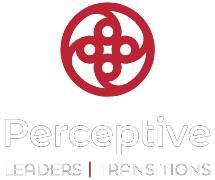
Sometimes the best strategy in a situation is to avoid conflict. There is a place for taking the path of not engaging in conflict. It can also become an overused path. One that becomes habitual and narrows our options in any given situation.
An individual or an entire team may struggle with conflict. If you or someone on your team struggles with conflict, you are not alone. There are many ways we human beings either engage in conflict or we attempt to avoid it. One of these differences is cultural.
In our work with organizations, we have seen what more than one client refers to as their “culture of nice.” We’d probably all agree that nice is a good thing. It can also be problematic when it inhibits an individual’s or team’s ability to engage in conflict. Being nice, and disagreeing, are not mutually exclusive.
Let’s back up for a moment and start with a simple definition of conflict. We describe it as any situation where two or more people have divergent perspectives and opinions. There is disagreement.
In and of itself, conflict is not a bad thing and indeed can be a good thing.
We may avoid these situations because we think that it won’t be productive or that it could put us in a bad light or may damage a relationship. It can also be uncomfortable in the moment and that’s one of the primary reasons we avoid it.
Setting aside the reason for a moment, when we avoid conflict, we often pay a price for doing so. While the upside is it may be more comfortable or expedient in the moment, the downsides can be considerable. If we were to boil those downsides into one thing it would be missed opportunity.
It’s worthy of consideration to find a way to experience the upsides of healthy and productive conflict. It starts with being willing to be uncomfortable. At least at first. One way to think about this is when there is discomfort you are learning.
The upside to be gained from healthy and productive conflict is that we have the opportunity for more interesting conversations, to learn from each other, to reach a shared understanding, and we make better choices if there’s a decision to be made.
When conflict is healthy it’s not personal. It’s about differences of perspective and opinion having to do with issues or ideas. It’s also safe to engage in the conversation because there is a basis of trust between the people in the room. When we are skillful in how we engage in conflict, and if part of a team, we’ve agreed to and honor conflict norms, then we can move through it productively.
In our experience working with senior leaders and their teams, when they engage skillfully in these discussions there’s a healthy tension. It’s palpable, you can feel it in the room. There is an aliveness where divergent opinions are freely expressed and considered by the team. You can also see that there is an underlying trust between member of the team. When trust is present people are willing to engage where there is disagreement, and to disagree.
In these situations, the team trusts that what needs to be said has been said and heard. There is a shared understanding of the topic at hand, and this leads to making decisions that are better informed. Those decisions are more likely to stick. Which is essential for any senior leadership team.
It may not happen overnight but it’s imminently possible. Start somewhere. Start small. Build the muscle of engaging skillfully in conflict. You’ll experience the benefits on a personal level and collectively as a team.
© Perceptive Leaders, 2022. All rights reserved.



